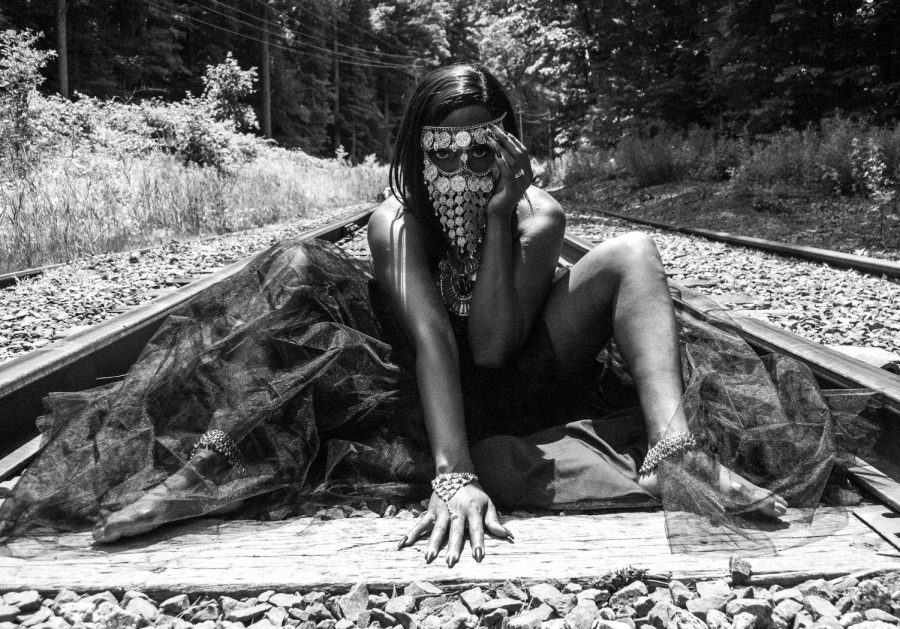Courtesy of Shanta Lee Gander and the Fleming Museum
Dark Goddess: Rethinking the Sacred Feminine
April 11, 2022
In her latest photography exhibition, Vermont-based artist Shanta Lee Gander rethinks the Sacred Feminine and the male gaze through a collaboration between artist, model and museum.
“Dark Goddess: An Exploration of the Sacred Feminine” began its display in the Fleming Museum of Art Feb. 8 and will remain until Dec. 9. On April 13, Gander will speak and student dancers will perform in collaboration with the exhibition at the Fleming.
The full exhibition combines Gander’s photography, a secondary exhibition of Fleming artifacts titled “Object-Defied” and the work of co-collaborator visiting artist Millie Heckler.
“I’m one of those artists that if someone is rejecting or doing something different to what I’m presenting, I love and provide it because then that also invites me into this space,” Gander said. “I like to play with the idea of the sacred and the profane.”
Gander wanted to create a project that explored a concept of the Goddess beyond simply maternal or benevolent, she said.
Fourteen black-and-white photographs encircle the Fleming’s Marble Court, each depicting models as deities that defy gender, Gander said.
Each of the models in the photographs pose in the foreground of forested landscapes, embellished in makeup and jewelry.
Gander worked closely with the models when creating the exhibition to allow space for them to define what the “Dark Goddess” meant for themselves, she said.
“There is definitely room for all the models who are also collaborators,” Gander said. “They co-created this image, it’s not just my image.”
Gander did not limit her project to photography.
Accompanying the portraits, the Fleming features an extension of the exhibition called “Object-Defied,” which uses artifacts to encourage conversations around representations of otherness in museum spaces, said Alice Boone, curator of education and public programs at Fleming.
The artifacts are from the Fleming’s archives and are personally selected by Gander, Boone said.
“Object-Defied” is housed in the museum’s European/American gallery, adjacent to Gander’s photography.
Through both her photography and her selection of artifacts for “Object-Defied,” Gander creates a unique opportunity to cultivate personal and institutional reflection, Boone said.
“It’s an artist speaking back to the museum,” she said.
While Heckler choreographed a contemporary dance performance by drawing from the voices featured throughout Gander’s art, her dance is a unique artistic formation of its own, Heckler said.
She hopes everyone can connect to the piece in their own individual way, she said.
“I wanted to create a facilitated process that was more centered around the individuals who are part of it, rather than performing someone else’s work,” Heckler said.
The idea of the “Dark Goddess” is open to interpretation, first-year dancer Ava Devost said.
“It’s very much about showing up as your authentic self and exploring different parts of your identity,” Devost said.
Alongside the performance, Gander will perform some of her poetry and deliver a talk on her exhibition.
She hopes it will give female-identifying individuals the opportunity to take up space, Gander said.
“I want to be the patron saint of encouraging people to be their most [authentic] self,” Gander said.
The collaboration between Gander and Heckler sets the tone for the future of the Fleming, especially as the museum aims to create spaces for reflection and generative response, Boone said.
Gander and Heckler’s evening of storytelling and performance will begin at 5:30 p.m. April 13 at the Fleming. The night is free to attend.
